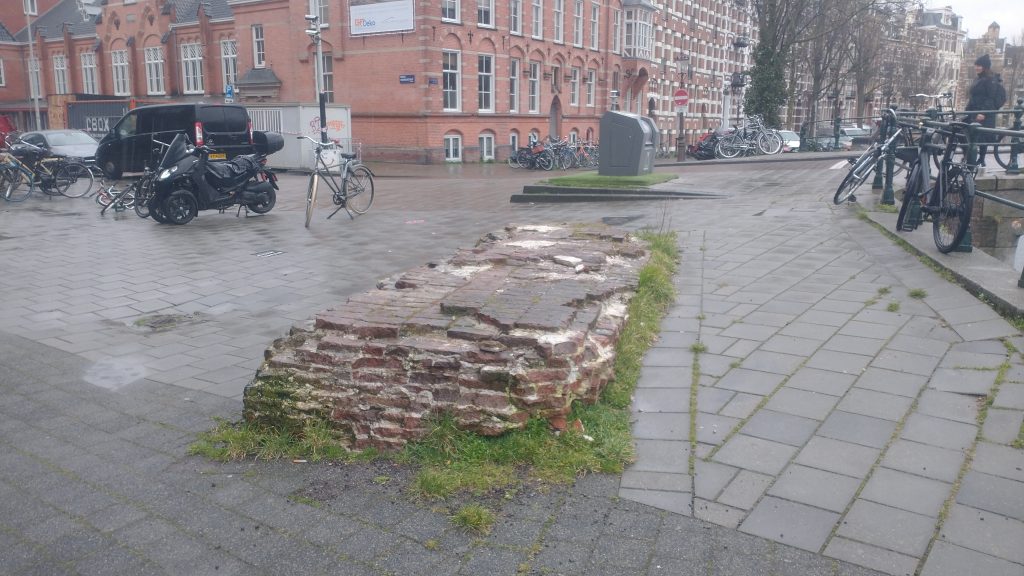
Oh! A glorious find! As I said yesterday, I wasn’t sure there was going to be a wall. But I headed towards the outer of the concentric rings of canals, thinking this is where a defense would be. I almost went straight to the centre but decided I had to give it a try so walked around the inner side of the outer canal. And almost immediately I found this slab of ruin.
The Wall! I thought but was it? And there was a panel with a plan.
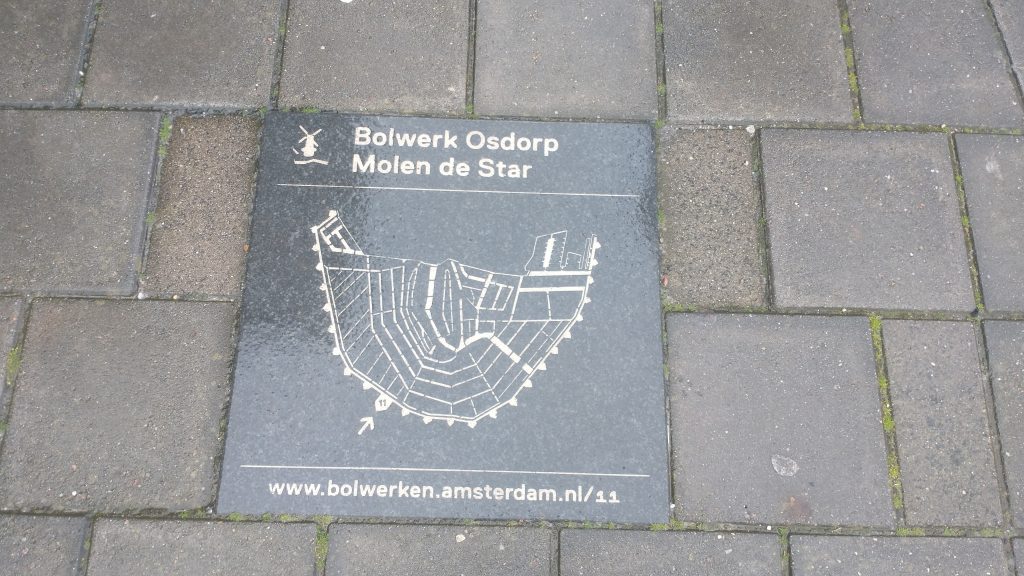
The panel links to this Dutch language site which seems to say in 1663 Amsterdam was given a 5 metre high City Wall. It talks about 5 sided ‘bolwerken’ which are bastions designed to withstand cannon fire. And this bit of the wall is near the Osdorp bolwerk.
https://www.amsterdam.nl/kunst-cultuur/monumenten/gebouwen-gebieden/bolwerken-amsterdam/
I then met my daughter and we went to the Rembrandt House which was interesting but very heavily reconstructed and in part difficult to know what was original and what a reconstruction.
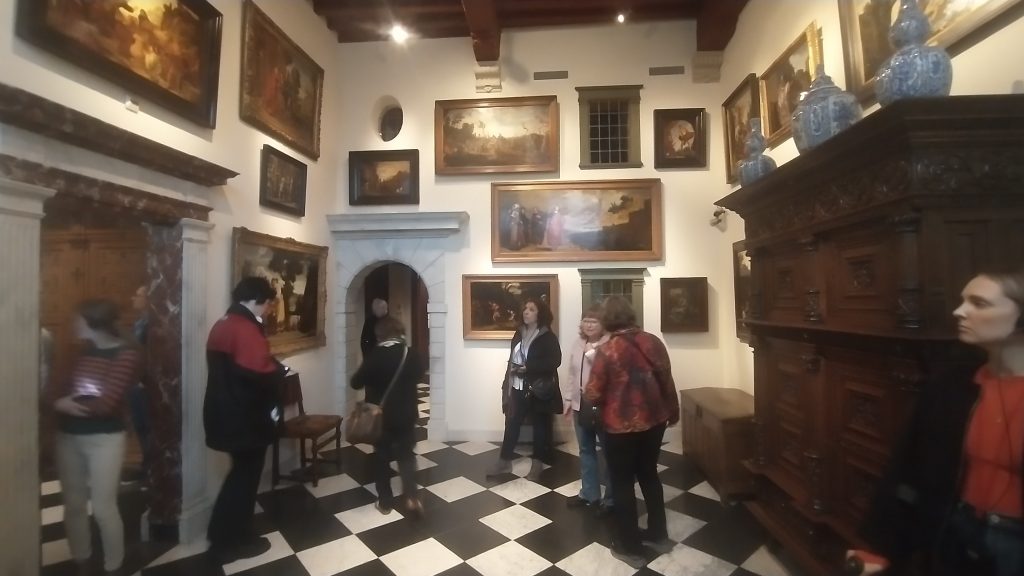
In the display was a Rembrandt Etching which features a section of the City Wall and a Windmill. It is dated to 1641 and so it suggests the 1663 date is for the bolwerken not the wall circuit as such.
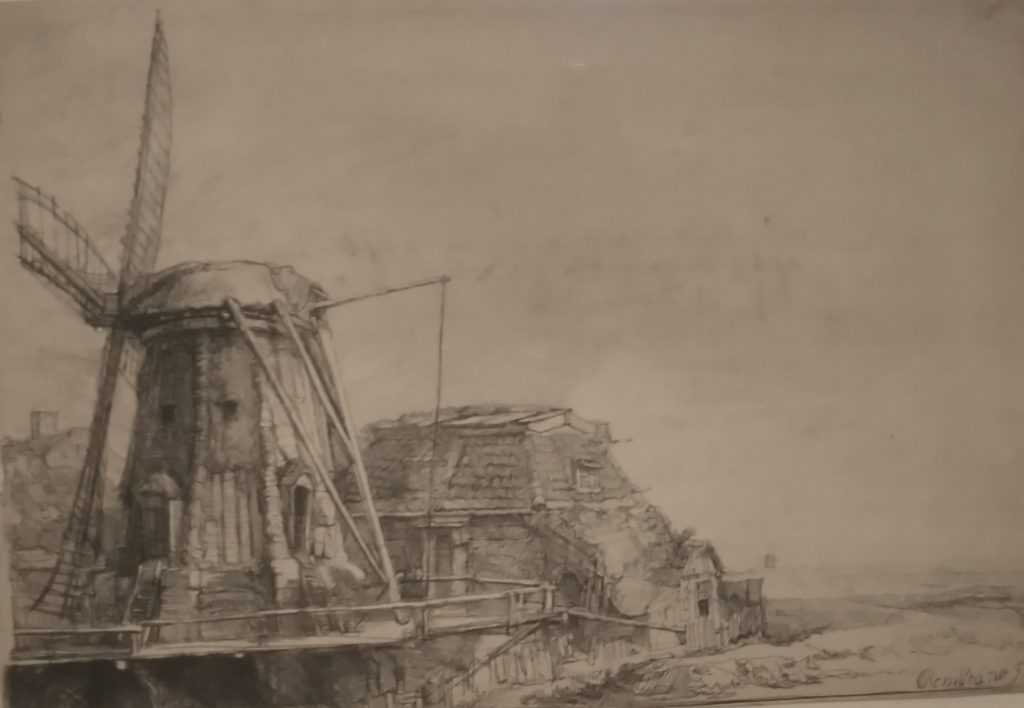
The mill was called the Little Stink Mill because it was used in the smelly process of making chamois leather.
There was a plan of the city in Rembrandt’s day but difficult to photo. Our next stop was the Amsterdam Museum which I had insisted we visited to find out information about the history of the City
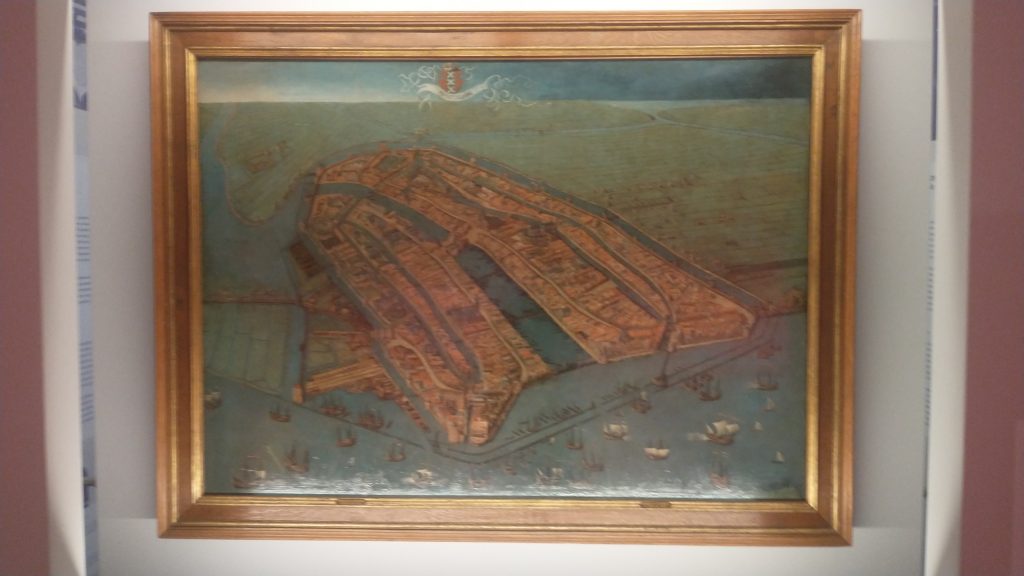
This shows the City wall with bastions, the port on the seafront at the bottom of the painting with the River Amstel running through the middle of the City, and canals running parallel. There is a moat running outside the wall circuit. What is missing is the concentric ring of canals which now exist inside the wall circuit.
Just to remind you of the current city plan.

This needs to be turned upside down to match the 16th Century view. A panel in the museum’s notes that Amsterdam is first documented in the late Thirteenth Century. The Protestant Netherlands broke away from the Catholic Hapsburghs in the 16th Century. I’m guessing the walls were built in the late 15th or early 16th Century as the one section I’ve seen is of brick.
So, now I’ve been doing a little research after returning from a visit to the sobering Anne Frank Museum – please remember to challenge prejudice whenever it raises its ugly head. Amsterdam was able to develop into a major town, when a flood turned the shallow river Ij into a wide waterway that linked the Amstel River to the Zuiderzee and the Ijessel in the 12th Century. This gave access to the sea and to the Rhine. It allowed the draining of the banks of the Amstel and with the building of a dam, gave birth to Amsterdam, the Dam on the River Amstel,
In the medieval period the walls were built and bastions added in the 17th Century. In the 17th Century the concentric canal circuits were built and every area given its canal frontage. Virtually all the buildings on the canals have bars protruding from the gable from which to mount a pulley to transfer goods from barge to warehouse, or vice versa,
Between 1880 and 1920 an amazing new defensive circuit was constructed around Amsterdam, which depended up a shallow flooding of the land. But it soon became obelete but is now a Unesco World Heritage Site.
Oh, and to add to what I said, yesterday, the world’s first Stock Exchange was built in Amsterdam in 1602, the same year the Dutch East India company was founded.
It’s a great City, with lots to enjoy, Big enough to be exciting, small enough to be manageable. Full of cyclists on tall upright bikes, chatting to each other as they cycle. I have seen a lot of cyclists riding with their hands in their pockets or holding an umbrella, and it is the first City I have been terrified of crossing the road because of the bikes who seem to ignore pedestrians and expect them to get out of the way; and the trams that hurtle along.
Discover more from And Did Those Feet
Subscribe to get the latest posts sent to your email.
